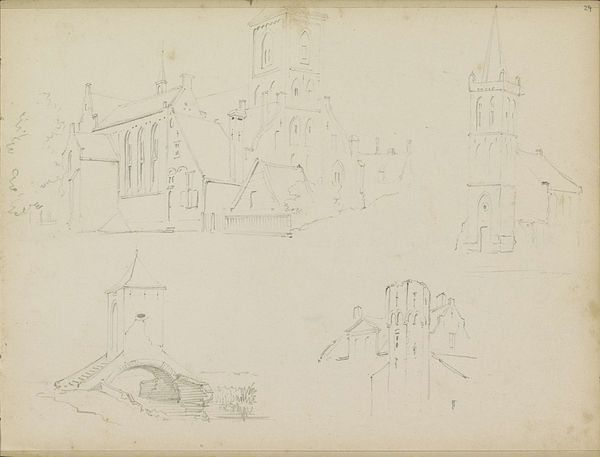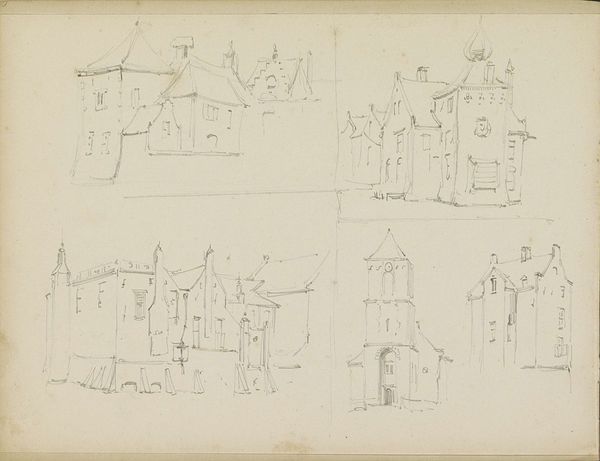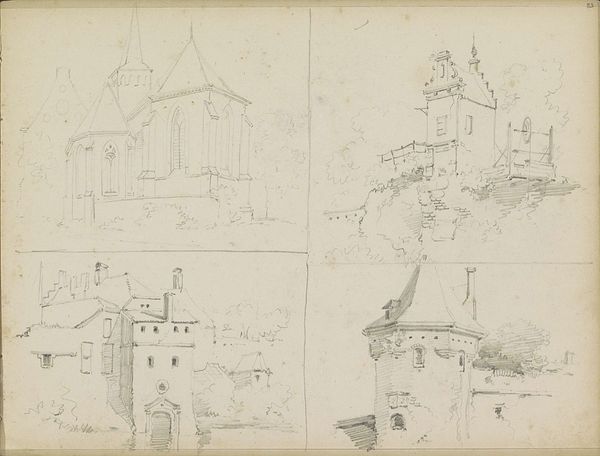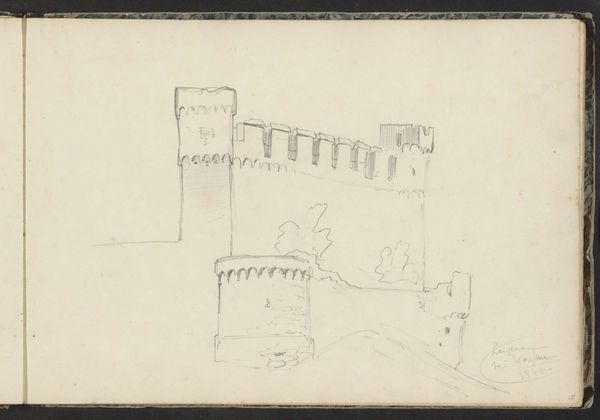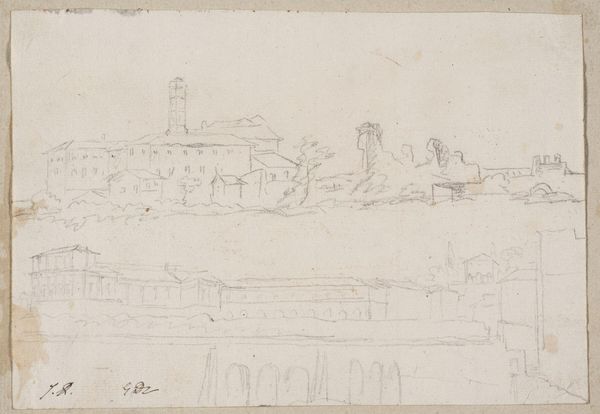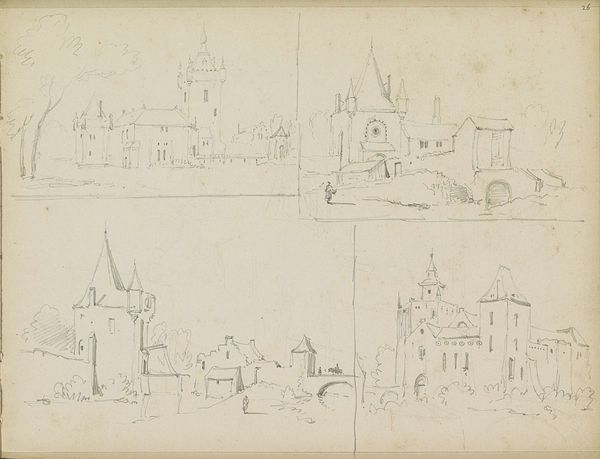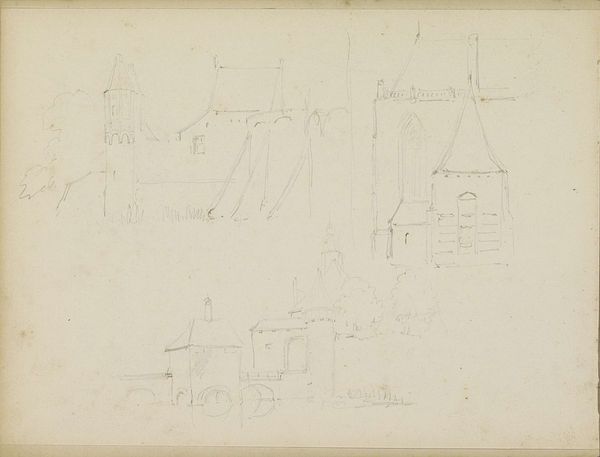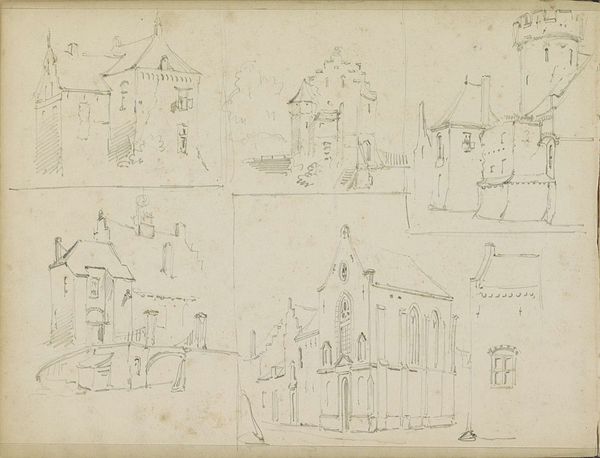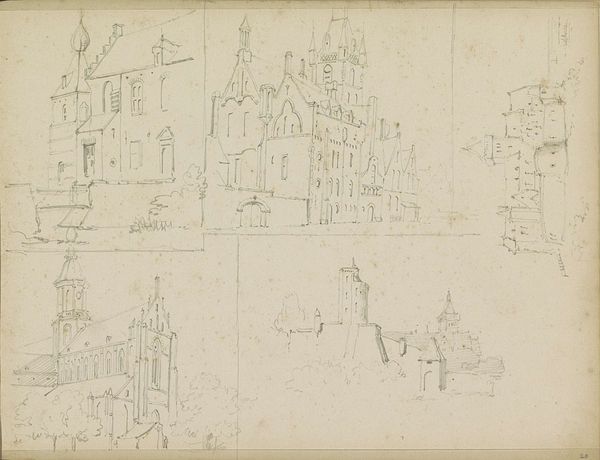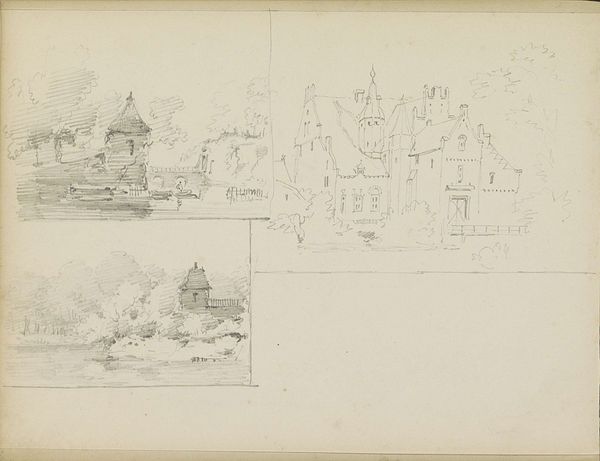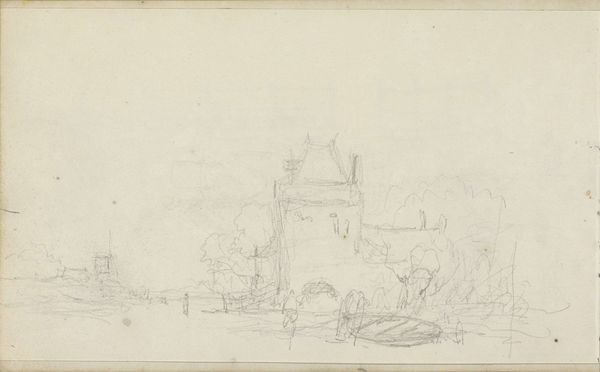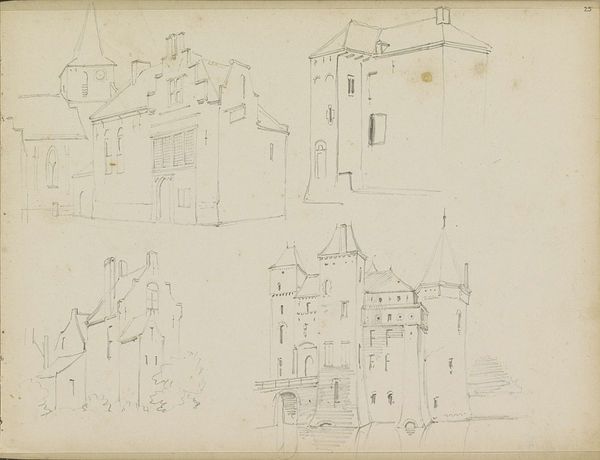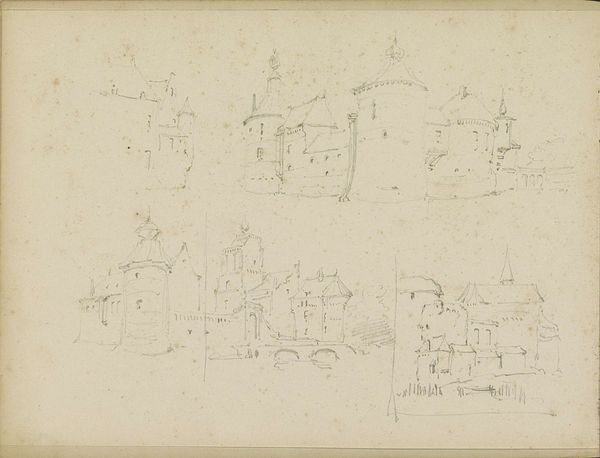
#
aged paper
#
toned paper
#
quirky sketch
#
sketch book
#
river
#
personal sketchbook
#
idea generation sketch
#
sketchwork
#
sketchbook drawing
#
storyboard and sketchbook work
#
sketchbook art
#
building
Copyright: Rijks Museum: Open Domain
Curator: Indeed. "Studieblad met gebouwen," or "Study Sheet with Buildings," is a page of sketches attributed to Adrianus Eversen, created sometime between 1828 and 1897. What grabs your attention when you first see this? Editor: I find it fascinating that it's just a collection of building sketches on aged paper. The quick, almost utilitarian nature of the lines makes me think of architectural blueprints, but they are also evocative and charming. What’s your read of this from an art historical perspective? Curator: I see these not just as preparatory sketches but as evidence of the labor involved in artistic production. Eversen's choice of a humble sketchbook and readily available pencil reflects a commitment to documenting his surroundings and his work as a kind of on-site manufacturing. We're looking at the raw materials of creation, right here, challenging that division of high art and everyday work. Editor: So you’re saying the medium is almost as important as the subject? The fact that these are quick sketches rather than polished architectural renderings shifts the entire perspective? Curator: Precisely. This 'study sheet' foregrounds the physical act of observing and drawing. Where did Eversen source his materials? How were they distributed and consumed within the art market of the 19th century? It compels us to consider the entire network of production and the socioeconomic context of Eversen’s work. Does this change how you interpret the sketches? Editor: Absolutely! Seeing it as part of a broader system of material production makes me consider the availability and affordability of drawing materials for artists in that period. I hadn't thought about that before. Curator: Considering these "buildings" within a system of artistic and material exchange reframes our understanding. Hopefully you can now look at a piece not just for what it represents, but how it came to be, materially.
Comments
No comments
Be the first to comment and join the conversation on the ultimate creative platform.
